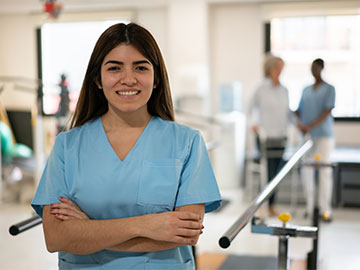Investigating the Varied Techniques of Physical Rehabilitation for Enhanced Recovery and Restoration
Investigating the Varied Techniques of Physical Rehabilitation for Enhanced Recovery and Restoration
Blog Article
Physical rehabilitation is an essential discipline that helps individuals recover from traumas, operations, and various health conditions. It involves a range of techniques aimed to enhance movement, alleviate pain, and enhance overall bodily function. Physical therapists are trained professionals who assess each client’s needs and create customized care plans. These programs often consist of workouts, manual therapy, and education about physical movements. By employing these diverse techniques, physical can substantially improve a person’s quality of living.
One frequent technique used in physical is rehabilitative activity. This includes targeted actions and exercises that help strengthen muscle strength, enhance range of motion, and boost endurance. For example, a patient rehabilitating from knee surgery may perform workouts that focus on rebuilding power in the lower limb muscle groups. These exercises are meticulously selected based on the individual’s condition and goals. By gradually increasing the intensity and complexity of the exercises, physical therapists can assist clients regain their strength and movement over a period.
Another crucial technique is manual treatment, which includes hands-on approaches to manipulate the human body tender tissues and articulations. This can involve stretching, mobilization, and manipulation. Manual treatment seeks to relieve discomfort, reduce inflammation, and enhance circulation. For example, a therapist may use gentle force to ease stress in tight muscle groups or to help a joint function more smoothly. This method is often combined with other therapies to improve rehabilitation and promote recovery. Patients often consider manual treatment to be a relaxing and effective way to manage their pain.
In addition to workouts and manual treatment, instruction plays a crucial part in physical. Therapists instruct patients about their issues and how to manage them efficiently. This may include advice on proper alignment, body movements, and strategies to prevent future traumas. For example, a practitioner might show a client how to lift weighty objects properly to avoid injuring their back. By enabling patients with understanding, physical practitioners assist them take an engaged role in their rehabilitation and encourage long-term health personal training for holistic health and fitness.
Finally, technological advancements is increasingly being incorporated into physical methods. Tools such as sonography, electrotherapy stimulation, and virtual environments can enhance conventional treatment approaches. These technologies can assist alleviate pain, encourage recovery, and provide engaging ways for patients to participate in their rehabilitation. For instance, virtual environments can generate immersive settings for patients to practice actions in a controlled and secure environment. As technology continues to develop, it provides exciting opportunities for improving rehabilitation outcomes in physical.
In summary, physiotherapy includes a variety of methods that work in unison to assist recovery and rehabilitation. Through rehabilitative activities, manual treatment, patient education, and the application of technology, physiotherapy practitioners offer comprehensive care customized to each individual’s requirements. This comprehensive approach not only assists clients regain their bodily abilities but also enables them to maintain their well-being in the long run. As an increasing number of people recognize the advantages of physical, it continues to play a crucial part in the pathway toward enhanced health and well-being.